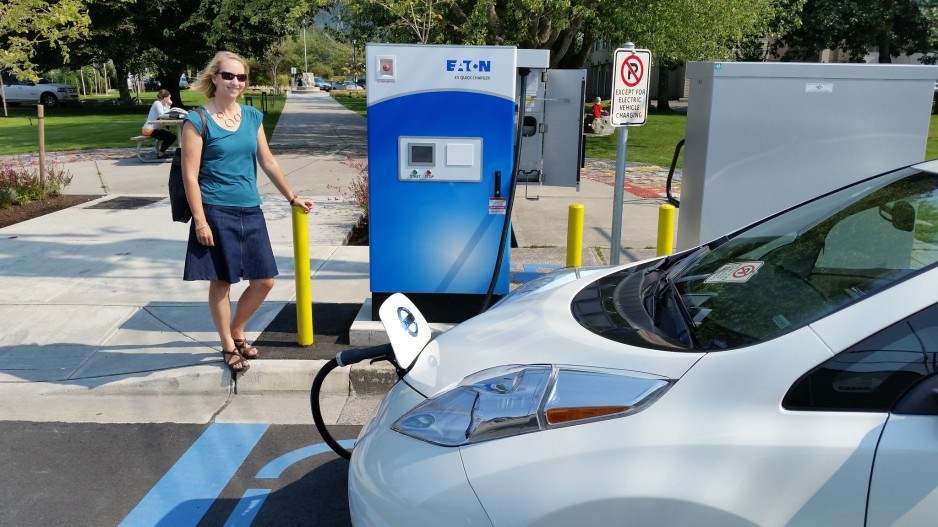If Burnaby’s General Fusion succeeds in a $150 million fusion energy experiment, much of the world could get zero-carbon electricity from lithium and the heavy hydrogen extracted from sea water.
Because one-third of the world’s greenhouse gases come from power production, fusion energy could put a serious dent in carbon dioxide emissions. But the technology needed to take a huge bite out of the world’s carbon budget isn’t awaiting some eureka moment in a lab somewhere.
As a recent study commissioned by Ontario auto parts maker Magna International Inc. points out, technology that dramatically reduces greenhouse gases already exists. It’s just not being exploited to its fullest potential, largely because coal, oil and gas are still cheaper and better established.
“We have the commercial technologies for zero-emission electricity,” said energy economist Mark Jaccard, one of the experts consulted on the Magna study, which was published recently by the Council of Canadian Academies.
Read: The economic engine of the future doesn't run on gas
While Jaccard has been an advocate of carbon pricing, he said a cap-and-trade system and carbon taxes aren’t the only tools governments can use to promote low-carbon technology. He said regulations like California’s stringent low-carbon fuel standards can be even more effective.
“California has a cap-and-trade system, but more of its reductions have happened from those regulations,” he said. “British Columbia has a carbon tax, but way more reductions occurred from our electricity regulation.”
B.C., Ontario and Quebec have already gone about as far as they can in getting to zero-carbon electricity production. The next big step they can take is in transportation, which generates about 38% of Canada’s energy-related greenhouse gas emissions.
Read: Can we move to a fossil-free future without wrecking our economy?
But no single technology solution works for every jurisdiction. In places that still rely on coal for most of their power, there might be little benefit to electric vehicle adoption, so hydrogen fuel cell vehicles or other low-emission cars and trucks might make more sense.

Vancouver-based GreenPower (TSX-V:GPV) makes electric buses | Dominic Schaefer
B.C. has a long way to go before it catches up to places like Norway, however, where 20% of all new vehicle sales are electric and hybrid electric vehicles, thanks to aggressive government policies, according to the Pacific Institute for Climate Solutions (PICS).
In B.C., EVs represent just 1% of new car sales, says PICS, despite a $5,000 rebate program the B.C. government has offered on new EV purchases.
Not that British Columbians don’t want electric vehicles. They just can’t find them on showroom floors, and, even when they do, the charging networks in B.C. are still too few and far between.
Merran Smith, executive director for Clean Energy Canada, said the B.C. government should implement policies similar to California’s if it’s serious about promoting EVs.
One of those policies is the zero-emission vehicle (ZEV) program, which requires car dealers to sell a certain number of battery electric, hybrid electric or hydrogen fuel cell vehicles.
“A study out of the University of Victoria recently showed that one-third of British Columbians are ready to buy an electric vehicle,” Smith said. “But if you go to the dealerships, you can’t find them. So a ZEV really starts to accelerate the uptake of electric vehicles by making them available for consumers.”
“If Christy Clark tomorrow put in a policy like the California vehicle emission standard, then over the next 20 years, we would have those emissions down in B.C. from personal cars by 80%,” Jaccard said. “And the cost of travel would just be marginally higher.”
But B.C. would also need to increase the build-out of public charging stations to reduce “range anxiety.” Whereas Norway now has 5,600 public charging stations, B.C. has only 600, according to PICS.
Jaccard said a low-emission standard should not just focus on EVs, but also include other low-emission vehicles, including those that run on biofuels. Vehicles that run on compressed or liquefied natural gas could help reduce CO2 emissions, although the Magna study came to some surprising conclusions about the comparative carbon efficiencies of diesel, gas and natural gas vehicles.
Although natural gas has a lower carbon content than gasoline, when upstream fugitive emissions are factored in, there is only a 6% to 11% reduction in greenhouse gases compared with gasoline, the study found. And because diesel engines are more efficient than gasoline engines, they have a lower overall output of greenhouse gases.
Significant reductions could also be found in more energy-efficient buildings and communities, something that falls within the purview of municipal governments.
District energy systems and heat-recapture technology for buildings and municipal sewage treatment plants can result in energy savings and lower greenhouse gas emissions. Vancouver already has a number of these systems in place.
As for industry, Jaccard said there has already been a positive move in B.C. with industries like pulp and paper mills installing energy systems that use wood waste.
B.C.’s Nexterra Systems Corp. has carved out a niche in that space with technology that turns wood and agricultural waste into synthetic gas, which is used to generate heat and power.
Thanks to its carbon tax and clean-power policies, B.C. has an edge when it comes to the green economy. But Smith said keeping that edge will require raising B.C.’s carbon tax.
“We’re already living with these [policies], and our economy is thriving,” she said. “We need to turn the dial on them.”
@nbennett_biv




